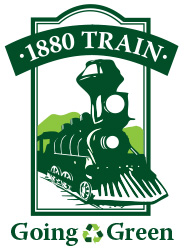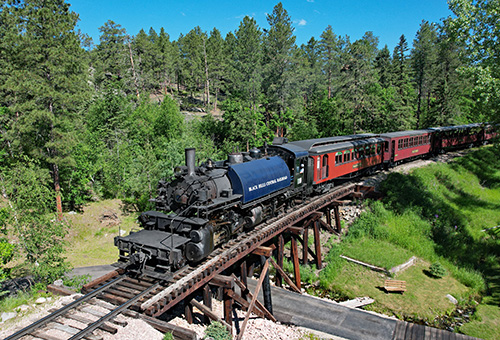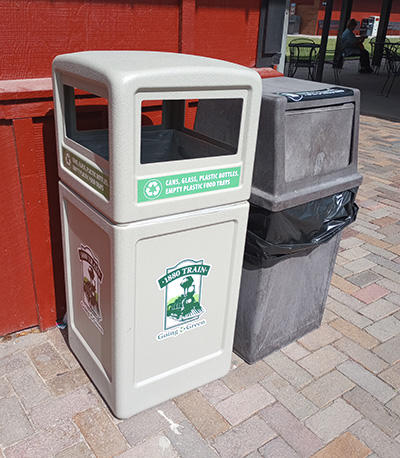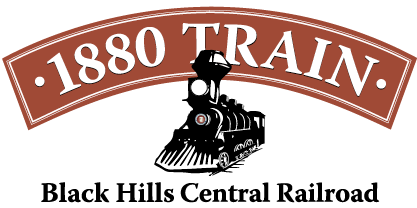Going Green

Our corporate mission at the 1880 Train is the preservation and operation of vintage steam locomotives and passenger equipment for the enjoyment of visitors to the Black Hills of South Dakota. Although operating 100-year-old steam locomotives is not an inherently green operation, we work to make sustainable and green choices in these and our other operations as described below. Additionally, we’re committed to sourcing at least 50% of our food as organic or locally grown! As you enjoy the sights, sounds, and even smells of our authentic equipment, take the opportunity to reflect on how far technology has progressed.
-
Electric Vehicle Charging

Two complimentary Clipper Creek J-1772 charging stations for electric vehicles are available at our Hill City location. Please register your vehicle at the Depot when you check in to get tickets.
https://www.plugshare.com/location/386909 -
Recycled Fuel Oil

Our locomotives burn reclaimed/recycled waste oil—the same motor oil normally disposed of during your vehicle’s oil changes. All our fuel (around 800 gallons per day) is sampled and processed by a commercial vendor to be of uniform grade and free of hazardous materials before delivery. We do not accept donated oil for this reason.
Our active locomotives were originally built as oil-burners for use in logging operations in the Pacific Northwest. Oil burns without embers or ash and so reduces the forest fire danger inherent in coal-burning locomotives. This fuel source is perfectly suited for operations within the Black Hills National Forest.
Our trains climb some of the steepest steam-powered grades in the tourist railroad industry—sometimes up to six percent. These steep grades work our locomotives very hard, but we pride ourselves in operating a “clear stack” with only a light brown haze. This represents the most efficient combustion of fuel and the cleanest emissions possible. Though you may see the exhaust darken on the steepest grades, you won’t experience the dramatic but harmful billowing black smoke you see in the movies.
However, you might catch a short blast of black smoke near the beginning of every trip when the fireman “sands the flues” by pouring clean white sand into the firebox to blast accumulated soot from the inside of the boiler tubes. This beneficially increases fuel efficiency for the remainder of the trip. Some sand particulates that are ejected from the stack may fall onto the roofs of our cars without impacting passengers.
-
Recycling Program

We recycle the large volume of food and beverage containers from our depots and restaurant, and the passenger cars and public areas are equipped with recycling bins. The plastic food containers we choose, plastic drink bottles, glass bottles, and aluminum cans can all be recycled in the tan recycling bins throughout the property and on the train. (Please dump the food contents out of your plastic containers and toss the packaging into the recycling!)
Each summer we fill fifteen to twenty large roll-off dumpsters with co-mingled plastic, glass, and aluminum recycling and send them to the Rapid City sorting facility for further processing—potentially removing 100 tons of material from the regional landfill. Similarly, we collect and recycle the brown cardboard used to ship our merchandise and food supplies, removing over a hundred cubic yards of cardboard from the landfill annually.
